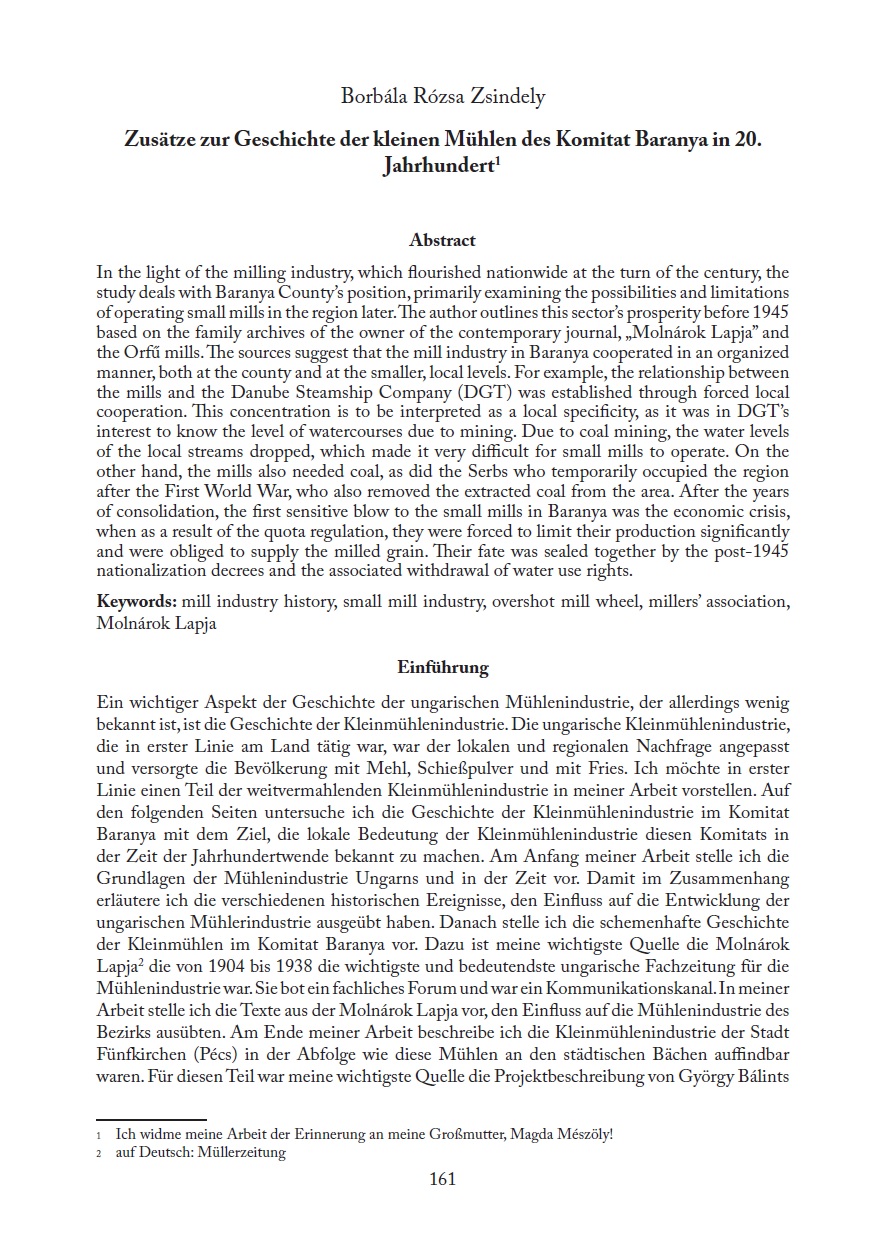Zusätze zur Geschichte der kleinen Mühlen des Komitat Baranya in 20. Jahrhundert
Abstract
In the light of the milling industry, which flourished nationwide at the turn of the century, the study deals with Baranya County’s position, primarily examining the possibilities and limitations of operating small mills in the region later. The author outlines this sector’s prosperity before 1945 based on the family archives of the owner of the contemporary journal, „Molnárok Lapja” and the Orfű mills. The sources suggest that the mill industry in Baranya cooperated in an organized manner, both at the county and at the smaller, local levels. For example, the relationship between the mills and the Danube Steamship Company (DGT) was established through forced local cooperation. This concentration is to be interpreted as a local specificity, as it was in DGT’s interest to know the level of watercourses due to mining. Due to coal mining, the water levels of the local streams dropped, which made it very difficult for small mills to operate. On the other hand, the mills also needed coal, as did the Serbs who temporarily occupied the region after the First World War, who also removed the extracted coal from the area. After the years of consolidation, the first sensitive blow to the small mills in Baranya was the economic crisis, when as a result of the quota regulation, they were forced to limit their production significantly and were obliged to supply the milled grain. Their fate was sealed together by the post-1945 nationalization decrees and the associated withdrawal of water use rights.

